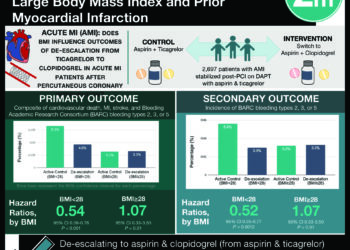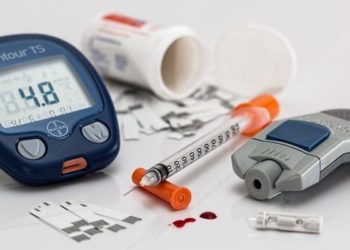Short and late sleep associated with adiposity in children
1. Children aged 2 to 6 years with actigraphy scores indicating short sleep duration or late sleep onset exhibited greater increases in body mass index (BMI) z-score. Late sleep was also associated with greater increases in waist circumference.
2. There was a combined effect between high family obesity risk and habitual late sleep resulting in significantly greater increases in BMI z-score and waist circumference.
Evidence Rating Level: 2 (Good)
Study Rundown: While previous studies have suggested an association between short sleep duration and childhood obesity, they are limited by reliance on subjective data such as parental report. Furthermore, there is minimal research on other dimensions of sleep, such as schedules, quantity, and quality. In this prospective cohort study, researchers recruited families in Sweden during their child’s 8-month checkup and took yearly measurements of child BMI, waist circumference, and sleep characteristics using actigraphy from age 2 to 6 years. Short sleep duration and late sleep (sleep onset after 21:00) scores were associated with a greater increase in BMI z-score. Independent of sleep duration, late sleep scores were also associated with a greater increase in waist circumference. While habitual late sleep did not significantly increase the risk of gaining more weight for children at low obesity risk (2 parents with normal BMI), it did for children with high obesity risk (1 or more parents with overweight or obese BMI).
This study was limited by the challenge of longitudinal actigraphy data collection with few children having complete sleep data over the entire study. Furthermore, diet, physical activity, and other factors that may affect adiposity were not objectively measured. Nonetheless, this study is strengthened by its objective measure of sleep characteristics and adiposity. For physicians, these findings highlight the importance of identifying and intervening on sleep habits that may increase a child’s risk for obesity, especially among children with familial vulnerability.
Click to read the study, published today in Pediatrics
Relevant reading: Sleep Duration and Incidence of Obesity in Infants, Children, and Adolescents: A Systematic Review and Meta-Analysis of Prospective Studies
In-Depth [prospective cohort]: Researchers in the Early Stockholm Obesity Prevention Project randomly recruited families in Stockholm who presented for their child’s 8-month checkup between 2010 and 2013 and collected yearly anthropometric measurements and sleep measures using actigraphy from age 2 to 6 years. Over 7 consecutive days each year, sleep schedule, quantity, and quality were measured. Children were excluded if parents were unable to communicate in Swedish, or if the child had chronic health problems likely to affect growth and development. Independent t-tests and chi-squared tests were used to examine the relationship between sleep characteristics and BMI z-score and waist circumference.
The sample included 107 children total, with 43 in the low-risk group (2 parents with BMI 18-24.9) and 64 in the high-risk group (at least 1 parent with BMI ≥30 or 2 parents with BMI 25-29.9). There were no significant differences in sleep characteristics between children in different risk groups. After adjusting for child age, sex, family obesity risk, and child and family factors, late sleep was associated with positive changes in BMI z score (0.16; 95% confidence interval [CI] 0.05 to 0.27) and waist circumference (0.60 cm; 95% CI 0.23 to 0.98) over time. Short sleep duration was independently and positively associated with increased BMI z-score (0.12; 95% CI 0.01 to 0.25). However, after Bonferroni correction, the only association that remained significant was between late sleep score and waist circumference. Children at high obesity risk with habitual late sleep had greater increases in BMI z score (0.93; 95% CI 0.40 to 1.45) and waist circumference (3.45 cm; 95% CI 1.78 to 5.12) compared with children at low risk without habitual late sleep.
Image: PD
©2020 2 Minute Medicine, Inc. All rights reserved. No works may be reproduced without expressed written consent from 2 Minute Medicine, Inc. Inquire about licensing here. No article should be construed as medical advice and is not intended as such by the authors or by 2 Minute Medicine, Inc.







